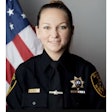When you read history books about military operations, the casualties - the people murdered and maimed - become just numbers. The humanity of it, the actual suffering is lost.
It's one thing to read that 600,000 men at arms died in the American Civil War. It's another to realize that George Smith, an individual American, an 18-year-old Indiana farm boy who was loved by his mother, whose sweetheart wrote him weekly, who probably would have lived another 50 years and had kids and grandkids, was killed in the first few minutes of the battle of Shiloh.
The reality of any armed conflict is that people suffer. Lives are cut short, bodies are maimed, and families grieve. Such is the sacrifice made by warriors and their families. And it is really a sacrifice that the whole human race shares because all wars seem to take the best and the brightest first. Their loss is a loss to all mankind. For who knows what they may have accomplished if they had lived out their natural lives. Or what their children might have accomplished, or their grandchildren.
There's been a war on crime in this country since its birth. Law enforcement officers are the soldiers in this war and its casualties. More than 19,000 of the best and brightest Americans have been sacrificed in that war.
What mankind has always done to ease its sorrow at the tragedy of war and to glorify the sacrifice of its warriors is to build monuments. A hundred years ago all of these monuments would have been to collective military units or they would depict great leaders astride their noble steeds, but that changed in 1980 when architect Maya Lin designed the Vietnam Veterans Memorial. The focus of that memorial is the names of the men and women who gave their all in that war.
Carving names into a wall as a memorial is nothing new. Loved ones have been doing it on tombstones for eons. But to take collective loss and personalize it to this level is very much a phenomenon of contemporary America. In this era's war memorials, the individual is glorified and mourned more than the unit or even the cause.
It's this concept that makes the nation's monument to warriors lost to the war on crime so powerful and compelling. The National Law Enforcement Officers Memorial in Washington, D.C., is really composed of more than 19,000 individual memorials: the names of the fallen cut into the stone. And it is so much more elegant and moving than if someone had erected some impersonal marble edifice to all of the officers who died in the line of duty.
I wish that every American could visit this memorial during Police Week. I have for two years in a row now and I'm not ashamed to say that the experience has never failed to leave me in tears.
The Memorial itself is beautiful. It consists of two white stone walls with thousands of names cut into them. There's also a fountain and two statues of lions (symbolizing officers) guarding their cubs (the public). It's quite moving.
But it's not the names on the walls that leave most visitors dabbing at their eyes. It's the stuff left behind by other visitors.
During Police Week, the walls of the Memorial are decorated with patches, flowers, wreaths, and other tributes sent by agencies. Then there's the personal stuff. The stuff that really kicks the casual observer in the gut is the mementoes left by comrades, parents, and lovers, and the hand-drawn art of the children. All but the most hard-hearted of the public would be moved by the kids' crayon art that say things like: "Daddy, I really miss you."
We have a hard time appreciating warriors in contemporary America and that's just the nature of who we are now. We teach our children that fighting, even to protect themselves and others, is wrong. And we generally don't like to acknowledge that there is evil in the world. But the one thing I think we do still understand is individual loss and grief. These feelings strike a chord somewhere way down deep in the human psyche.
Somehow I think if most of America could visit the National Law Enforcement Officers Memorial, especially during Police Week, and see the tangible evidence of what your sisters and brothers have sacrificed to keep all Americans more secure, then you'd be more appreciated. Maybe associating names with the casualty figures might even make you safer.
Wishful thinking? Perhaps. But names on a wall are a powerful thing.
Read POLICE Magazine's online coverage of Police Week.
Related: What They Left Behind (photos)














